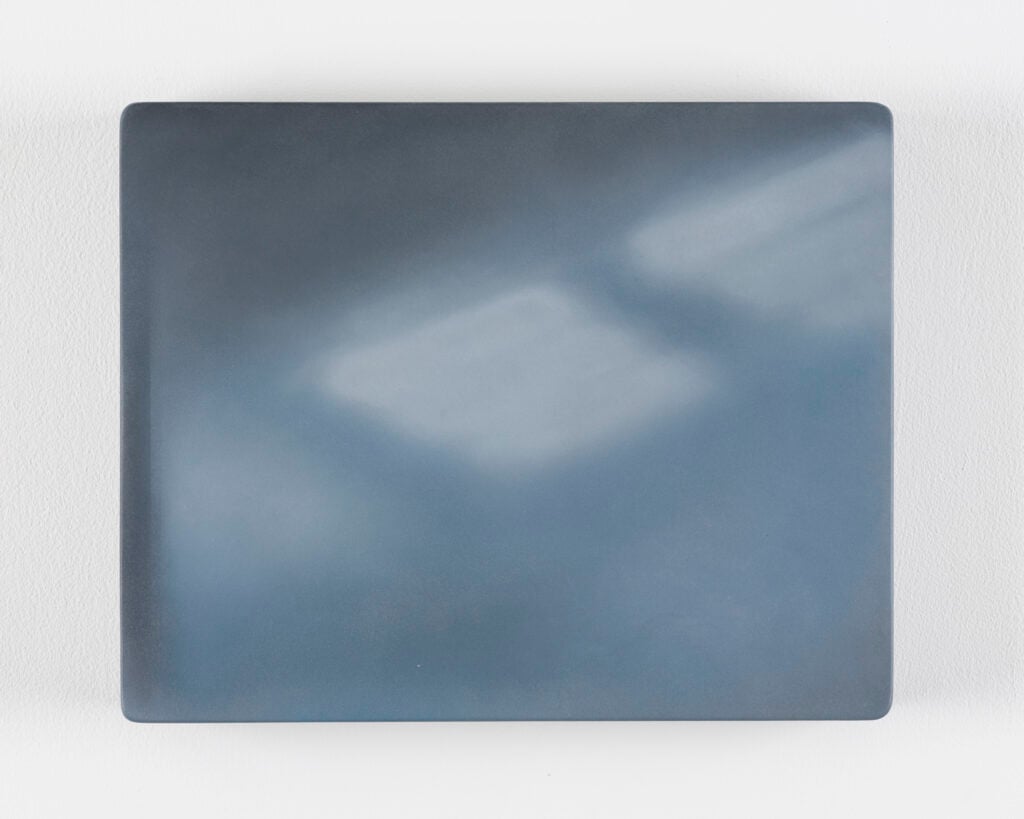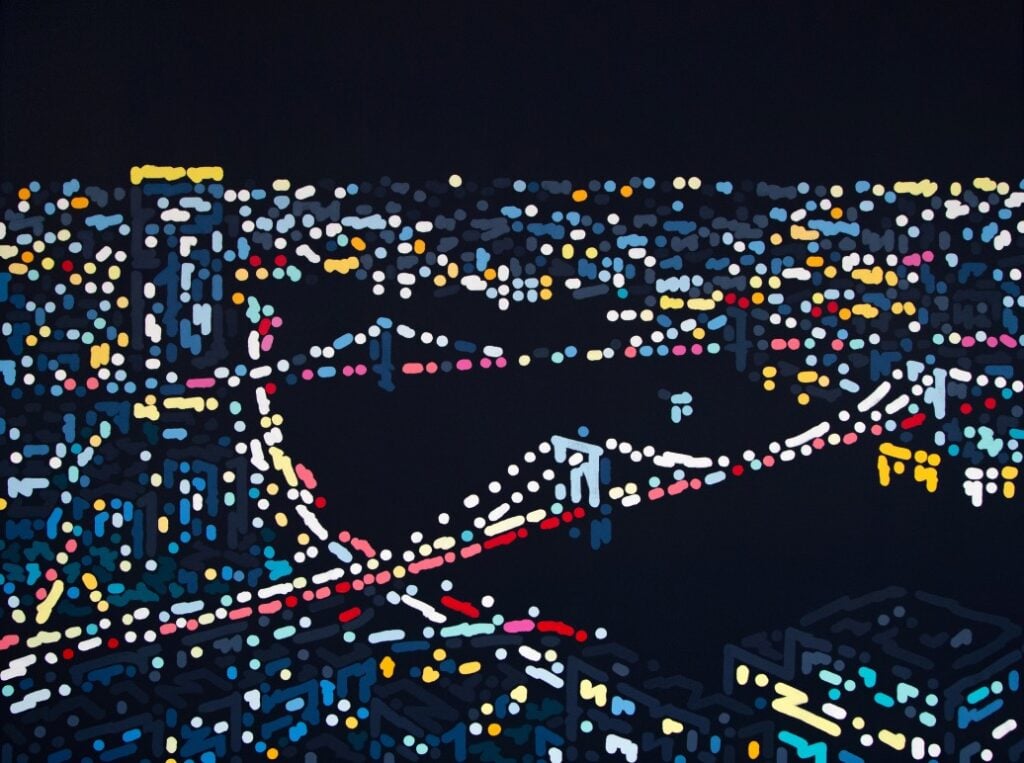
- This event has passed.
EVENT DESCRIPTION
Chiyu Uemae’s practice transcends conventional artistic production to embody a profound meditation on existence. Through his meticulous pointillist abstractions and later textile works, Uemae articulates a deeply personal cosmology at the intersection of humanity, labour, materiality, and temporal awareness.
In the landscape of post-war Japanese art, Uemae emerges as a singular presence. As one of the few artists who remained with the pioneering Gutai Art Association from its inception until its dissolution, Uemae’s oeuvre represents a unique trajectory within the movement’s radical experimentations. Cosmology presents sixteen pivotal works from the 1950s to the 2000s, offering a contemplative journey through the accumulated gestures of Uemae’s personal and creative life.
Born into profound poverty in 1920 in a frigid village in Kyoto Prefecture, Uemae’s early life was marked by loss and precarity. His father’s premature death and his mother’s chronic frailty cast long shadows over his childhood. Yet, within this austere mountain existence, he found his first creative impulse, discovering an innate affinity for making things during elementary school. This nascent artistic sensibility would lie dormant as circumstances forced him into premature adulthood—unable to attend middle school, he was sent to work at a kimono cleaning shop in Kyoto, shouldering the responsibility of supporting his family through manual labour.
The seemingly insurmountable distance between his non-artistic daily existence and his innate creative gifts found resolution through an almost destined encounter with the Gutai Art Association (1954-1972) led by Jiro Yoshihara. His raw talent, previously constrained by circumstance, flourished within this avant-garde context, transforming his lived experience of poverty and labour into a unique artistic vocabulary.
For Uemae, the fundament of self-existence stands between “labour” and “creation”—yet these ostensibly opposing forces found synthesis in his practice. While working as a crane operator in a foundry, he sacrificed sleep to pursue art, finding a profound source of inspiration in this dual existence. He stated, “In my mind, strong feelings of inferiority and an unshakeable sense of superiority flow like atmospheric pressure.” This duality powerfully manifested in an early Gutai period, where his work gained international recognition, showing at the Martha Jackson Gallery in New York (1958) and later at the Galerie Stadler in Paris (1965), championed by the influential French critic Michel Tapié.


